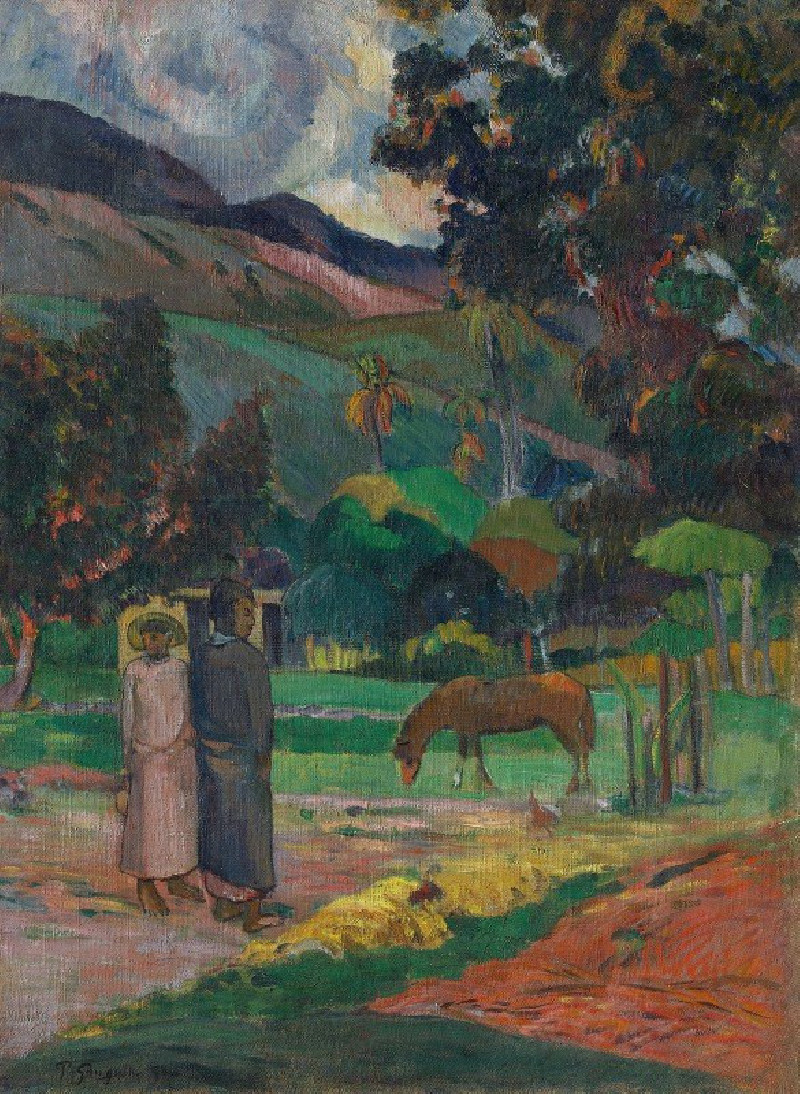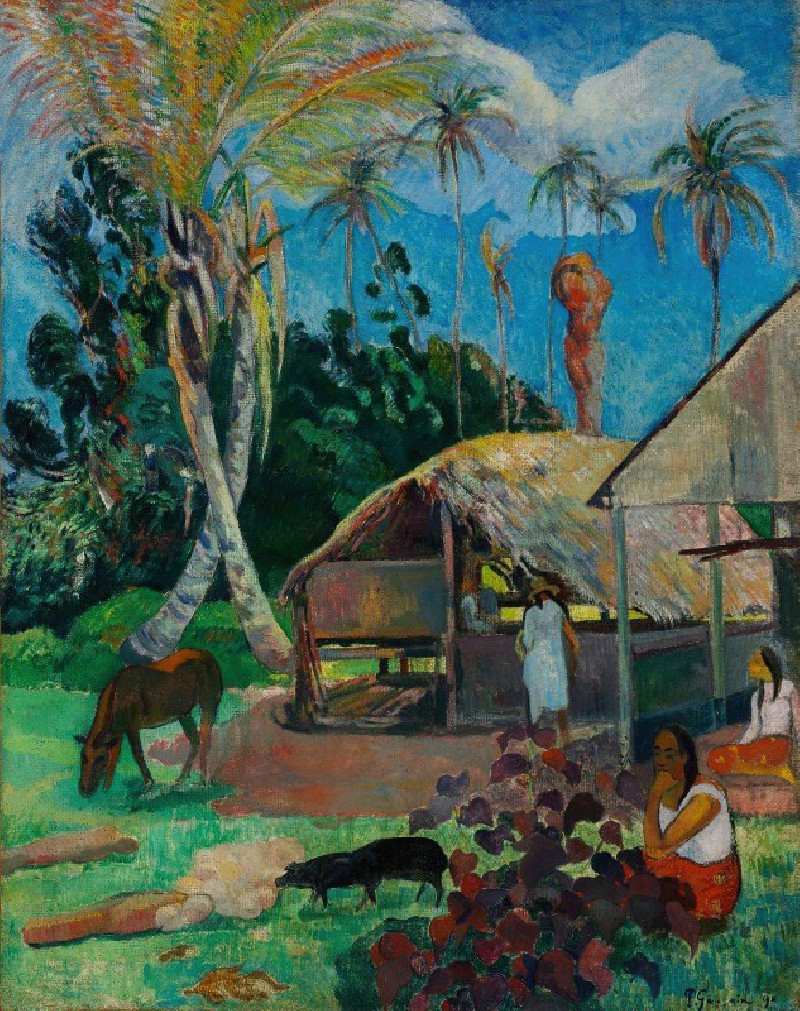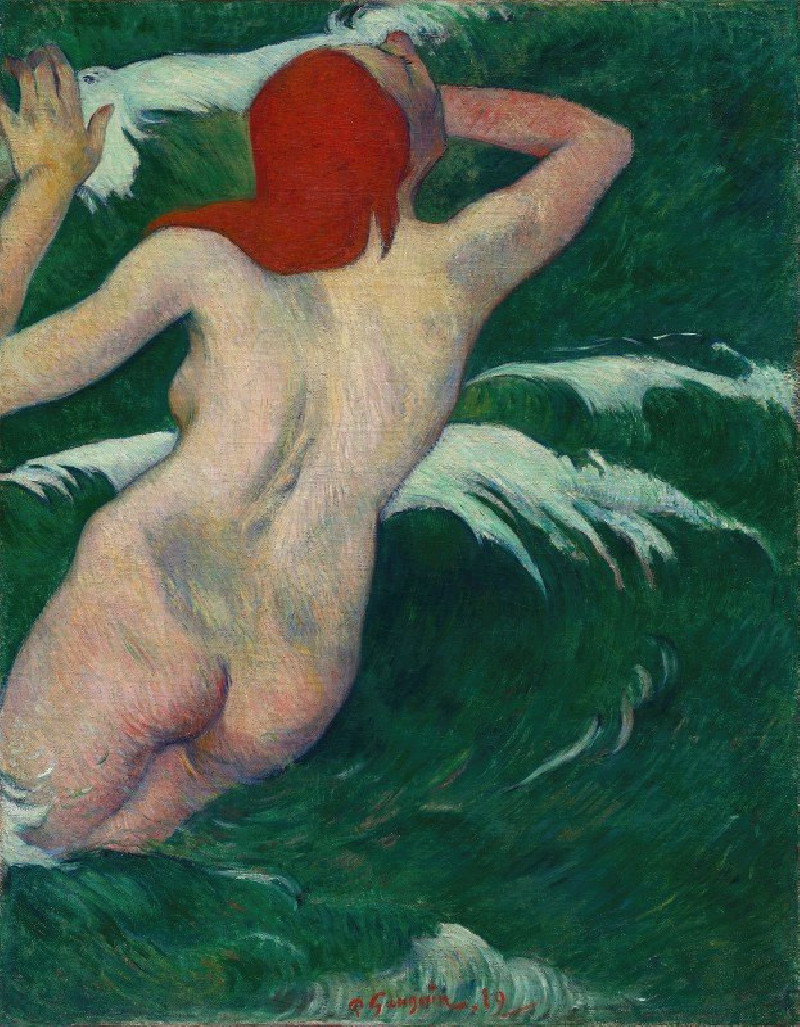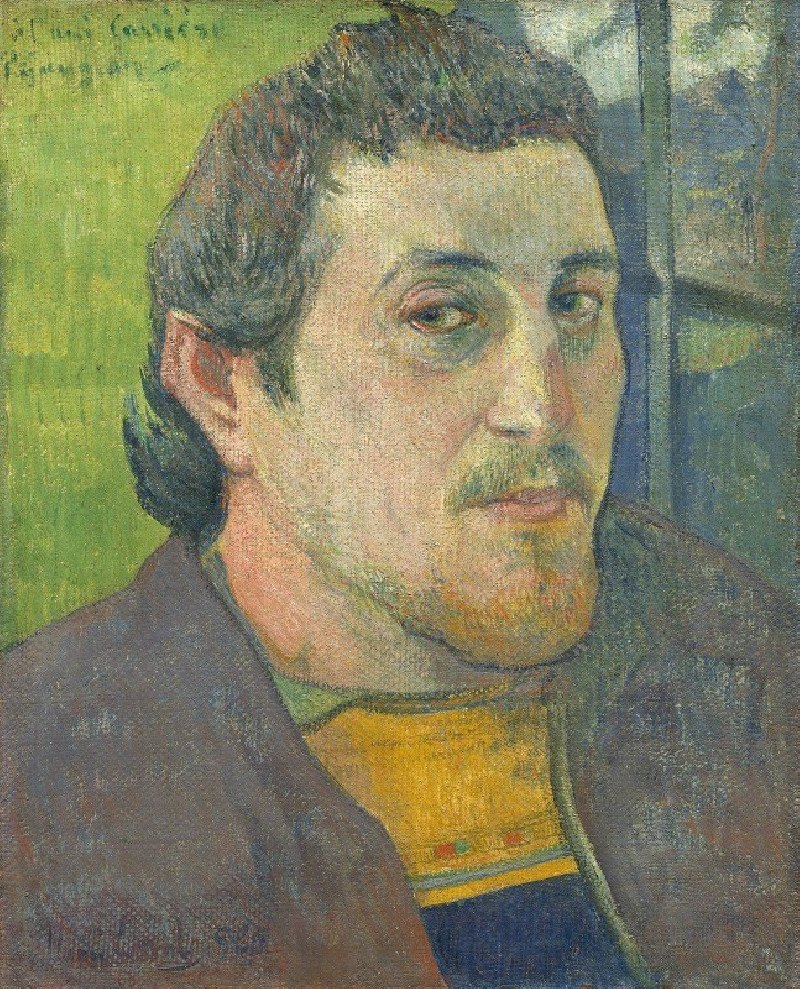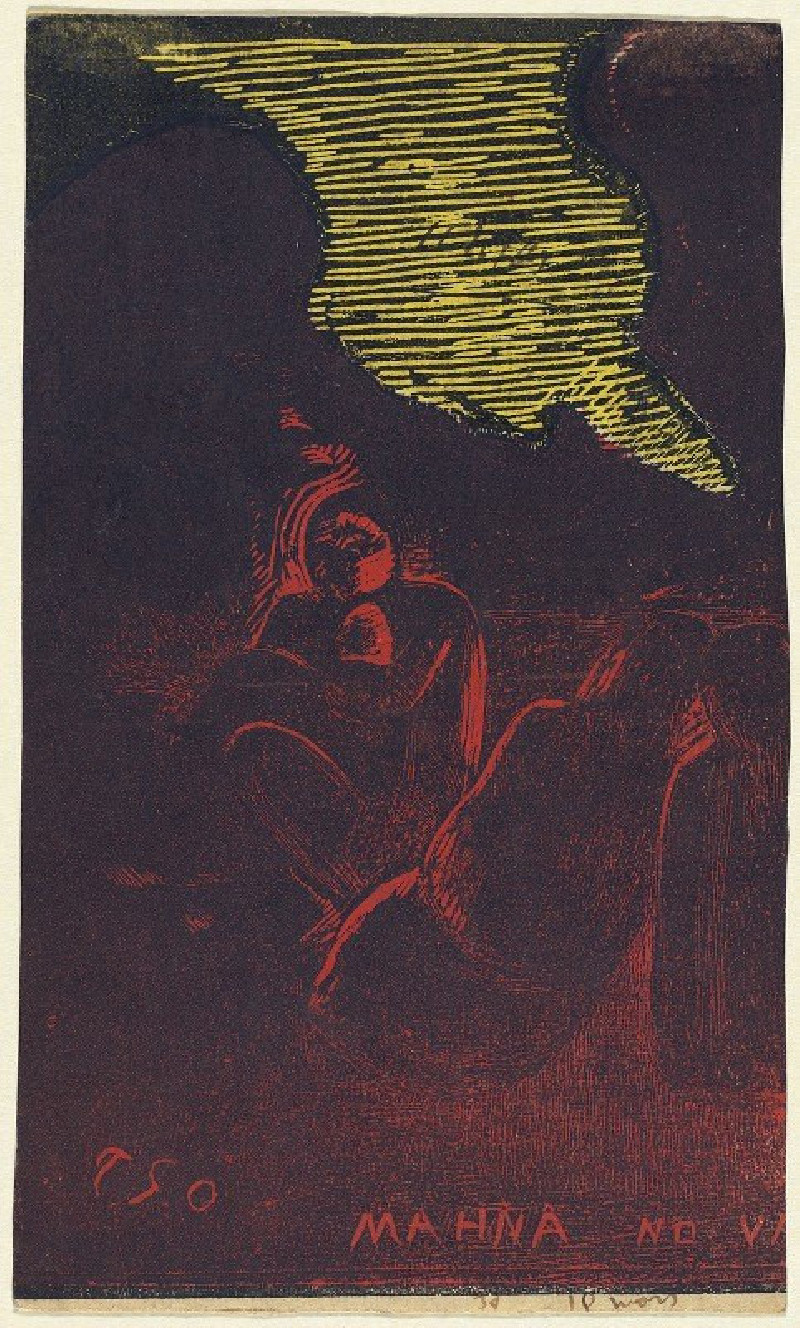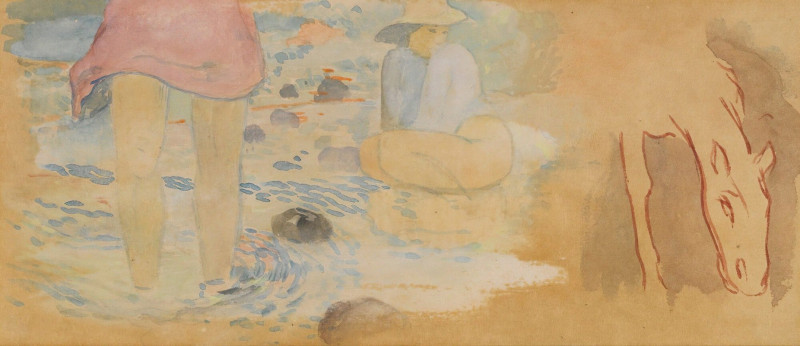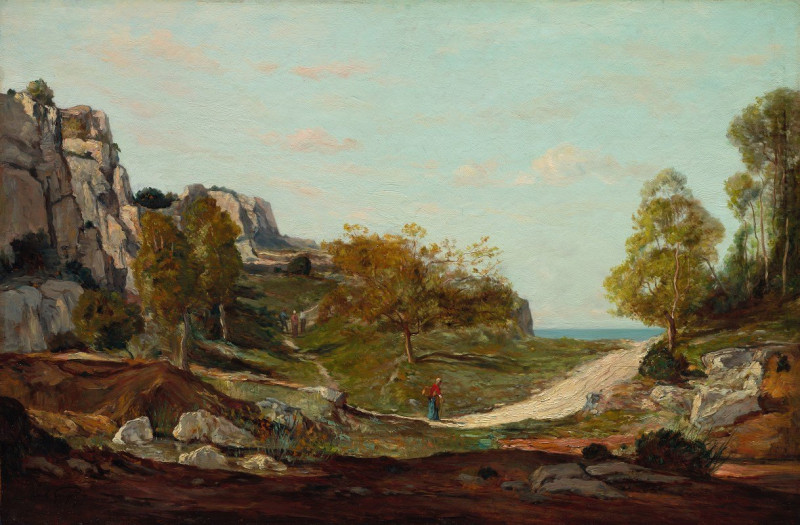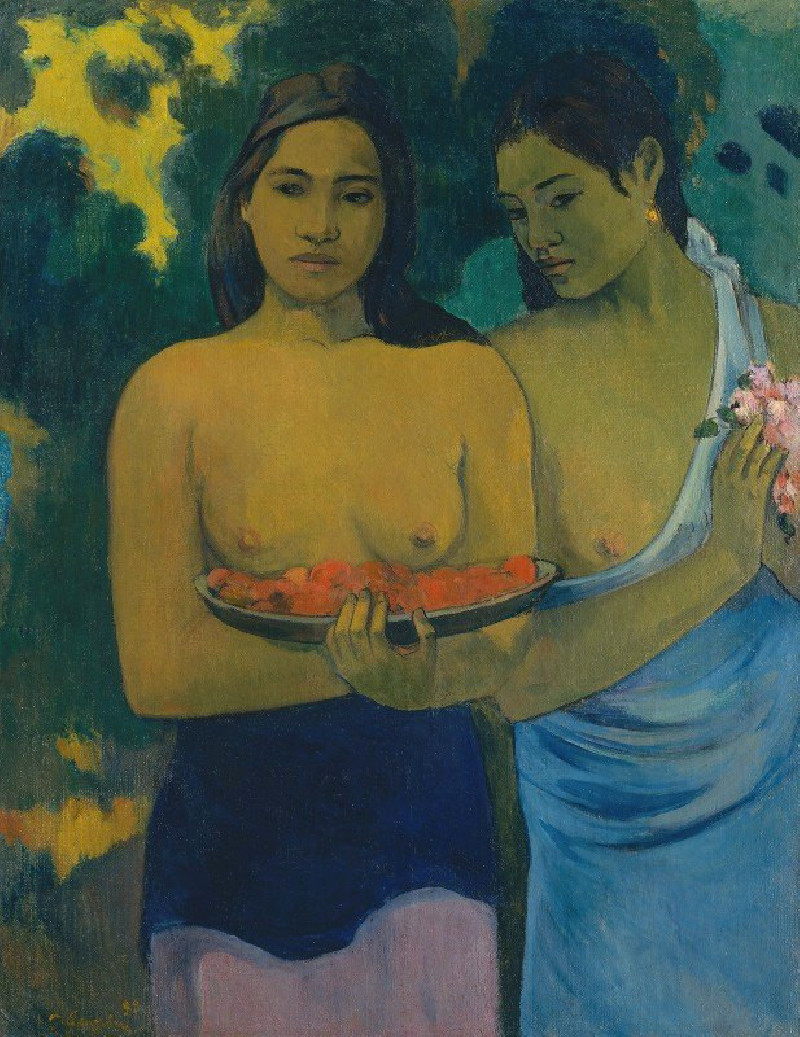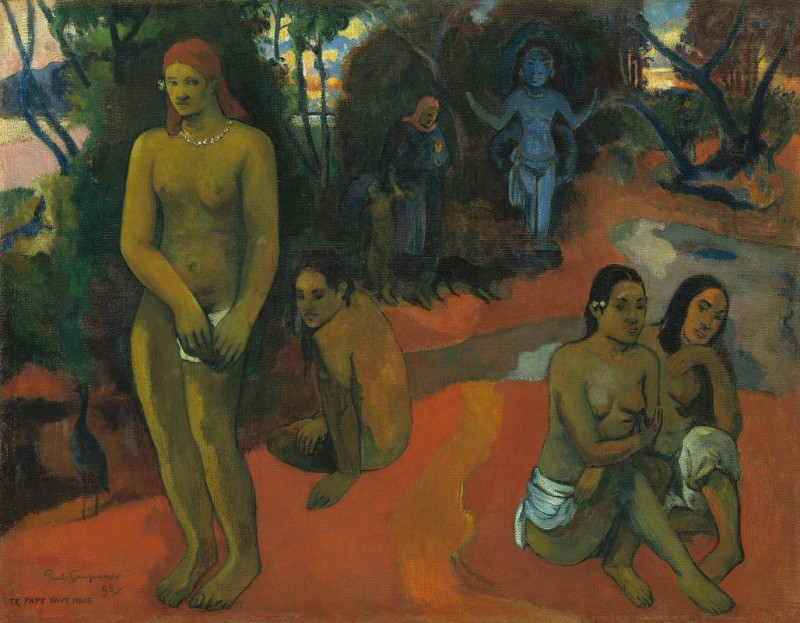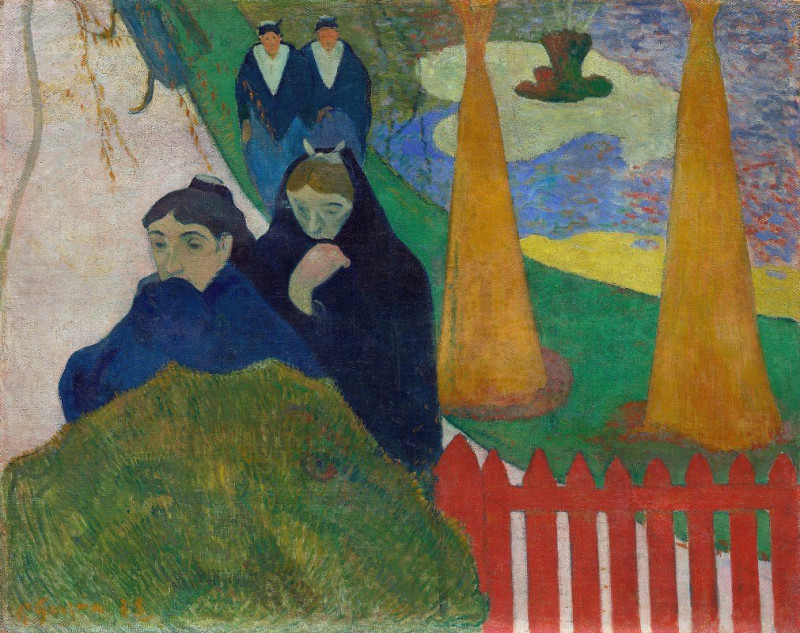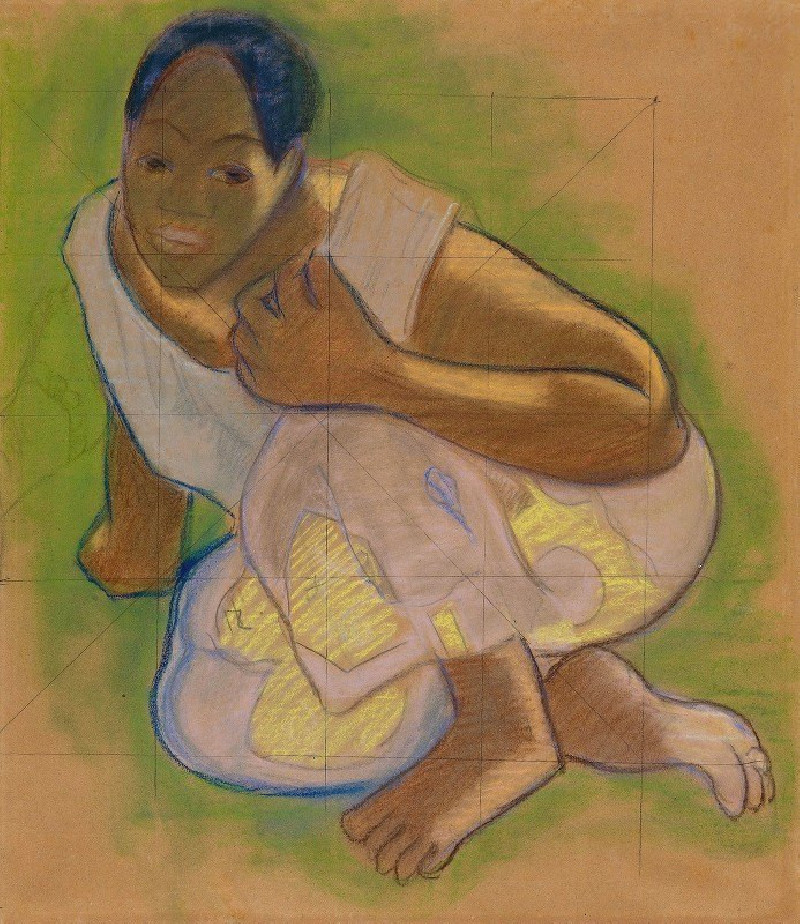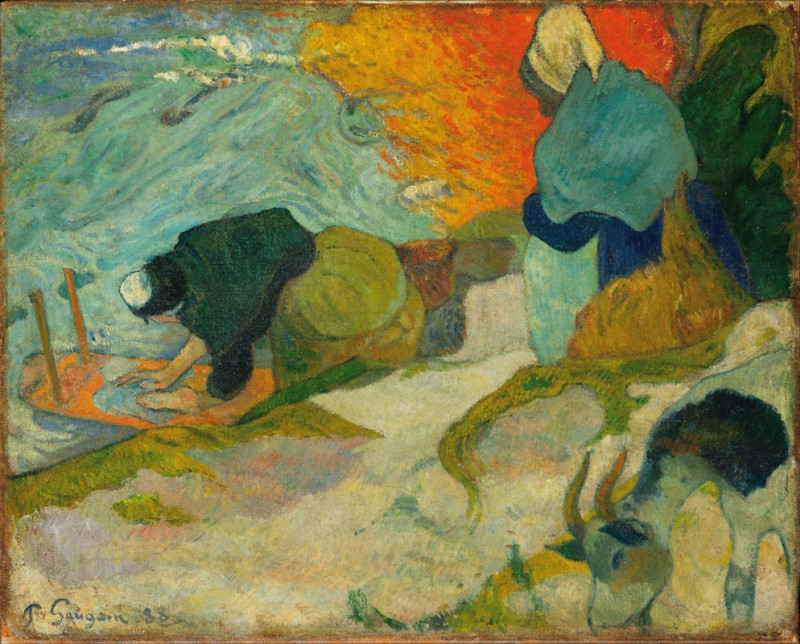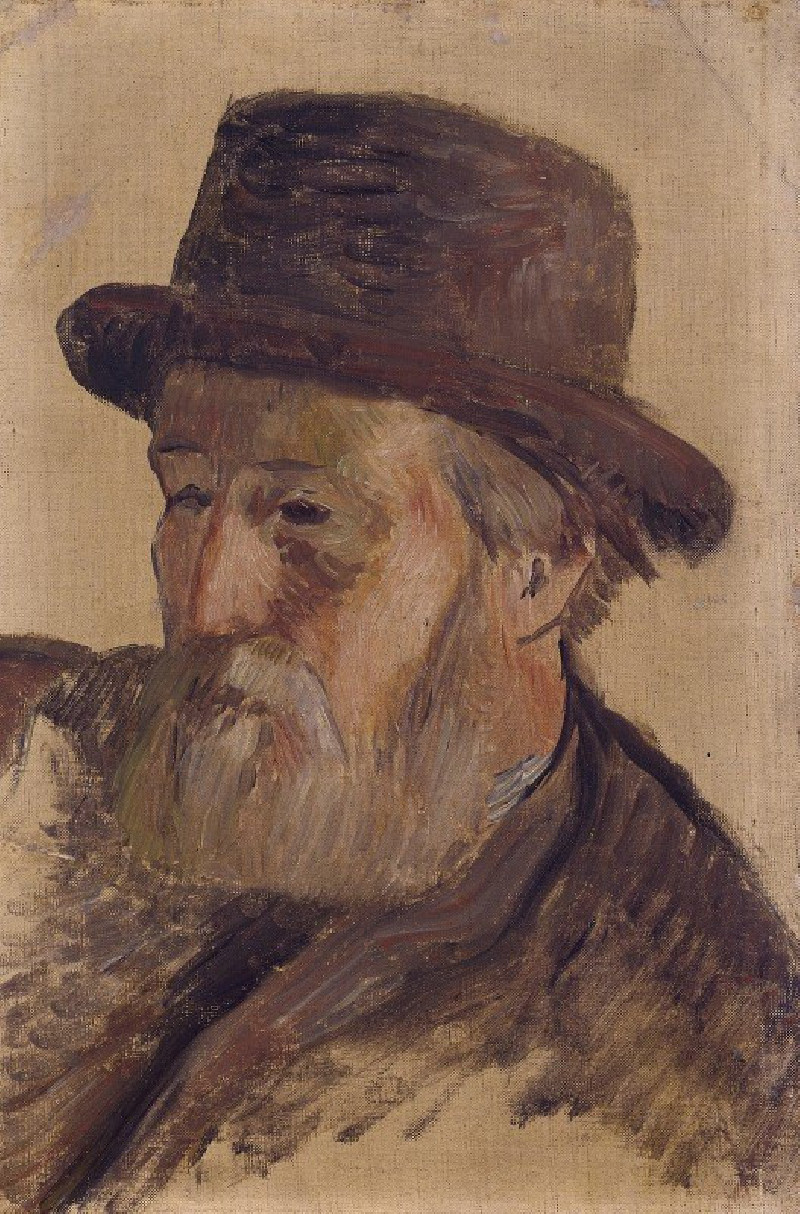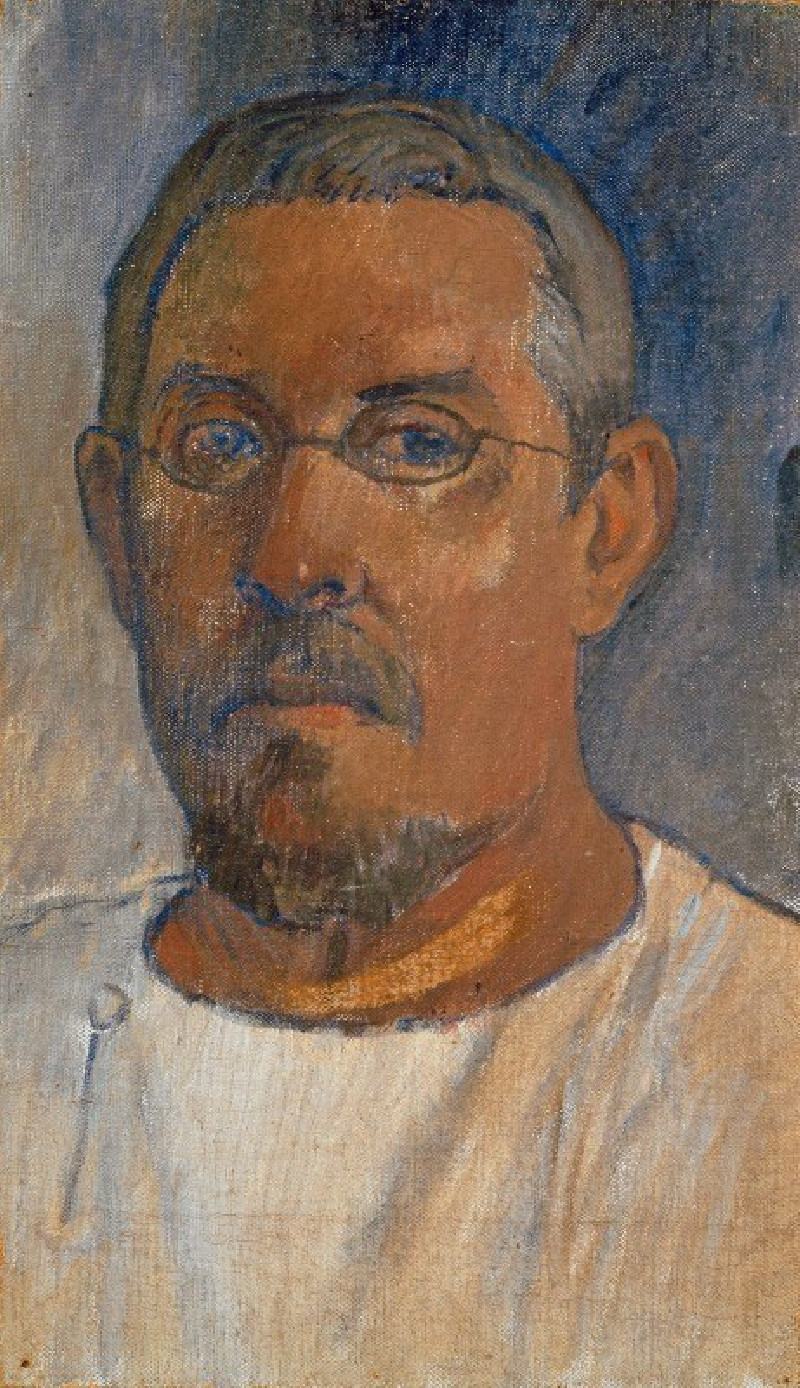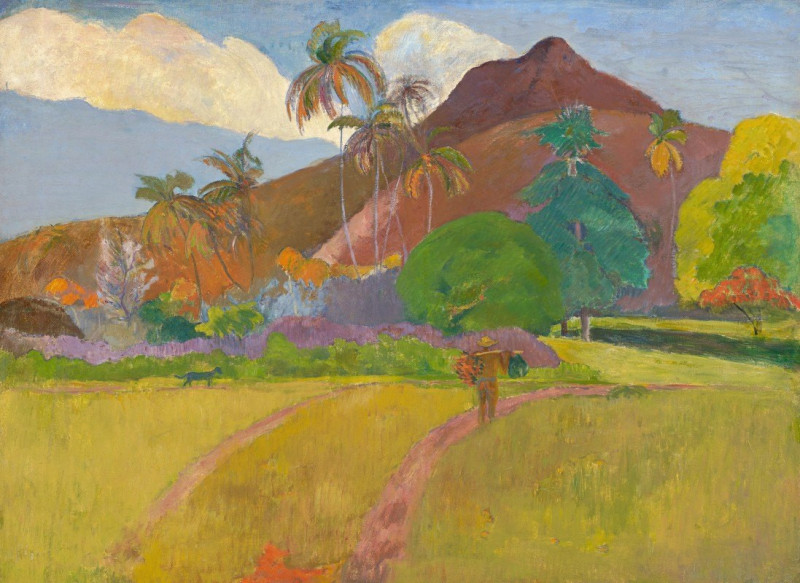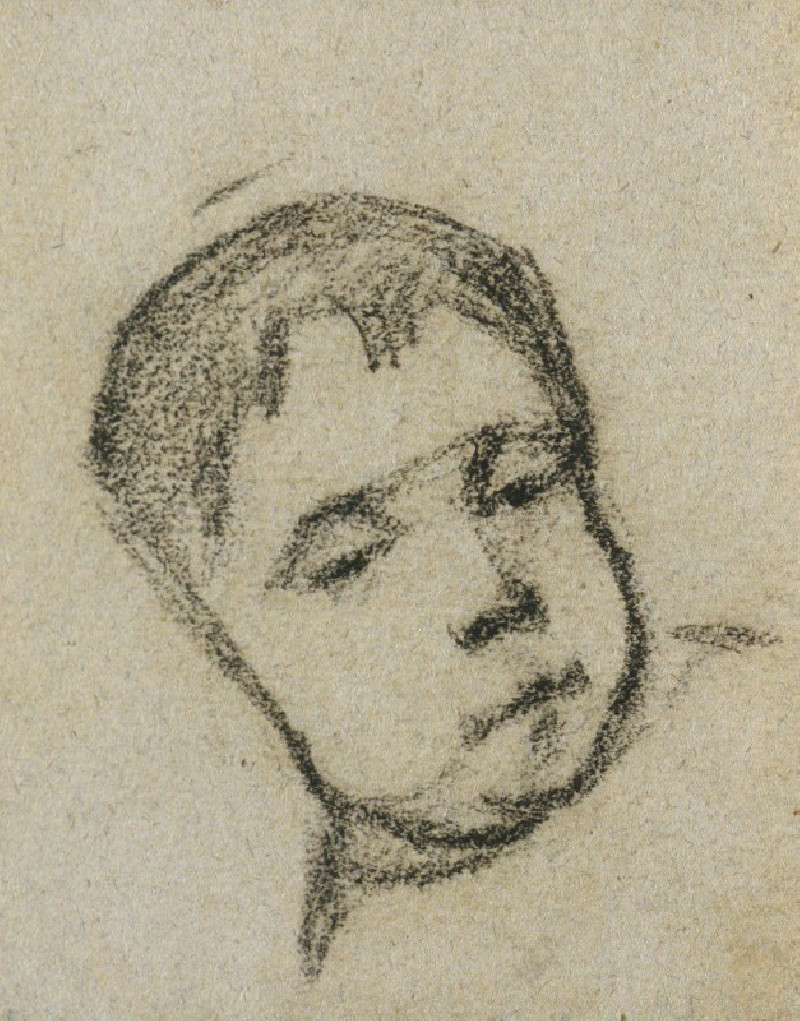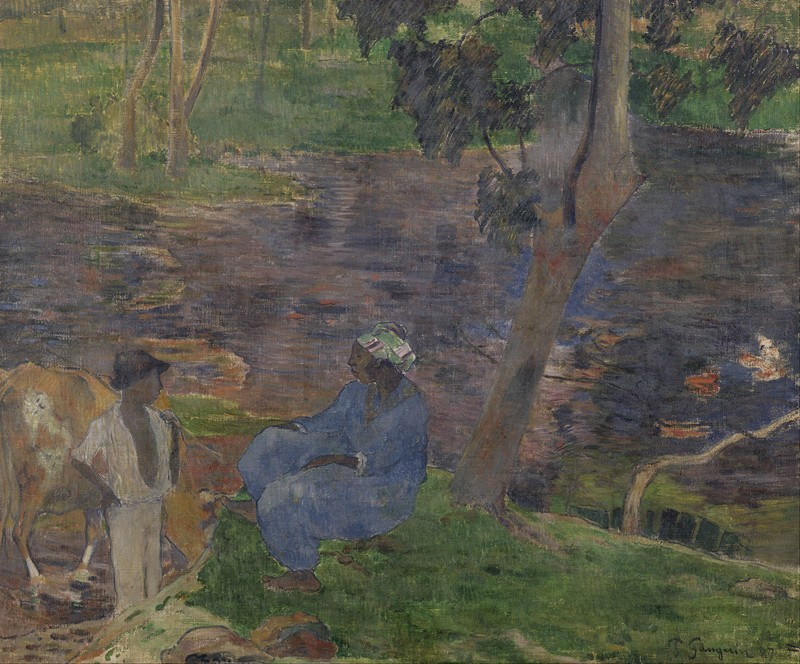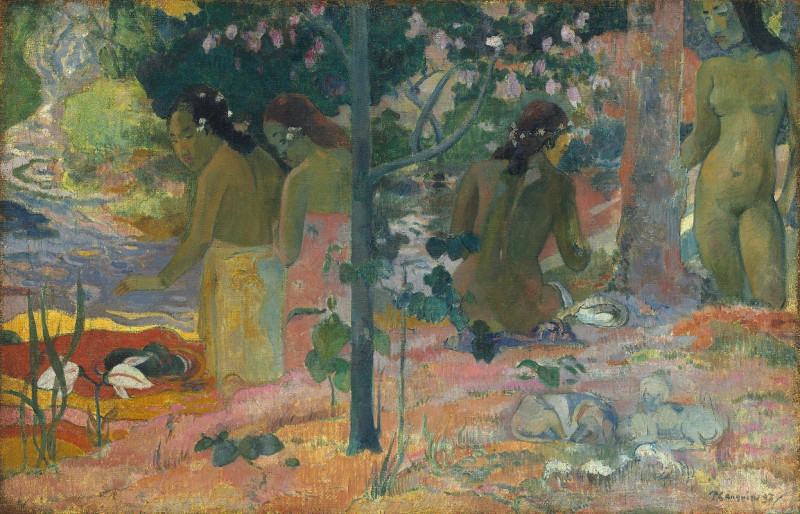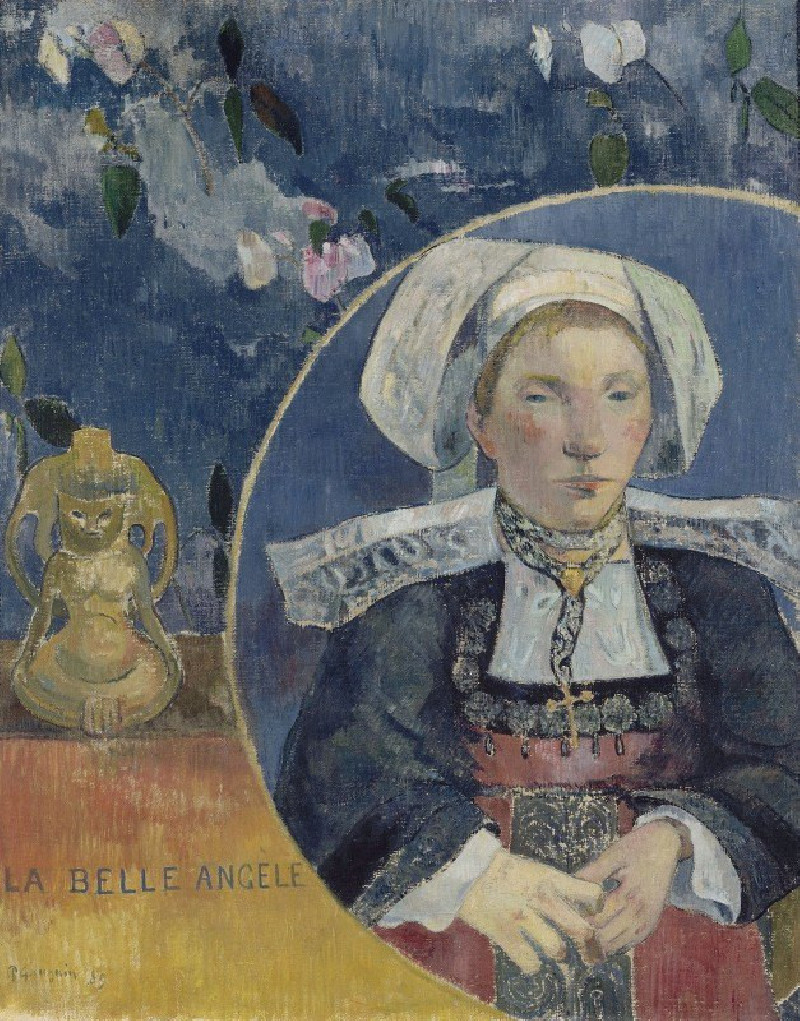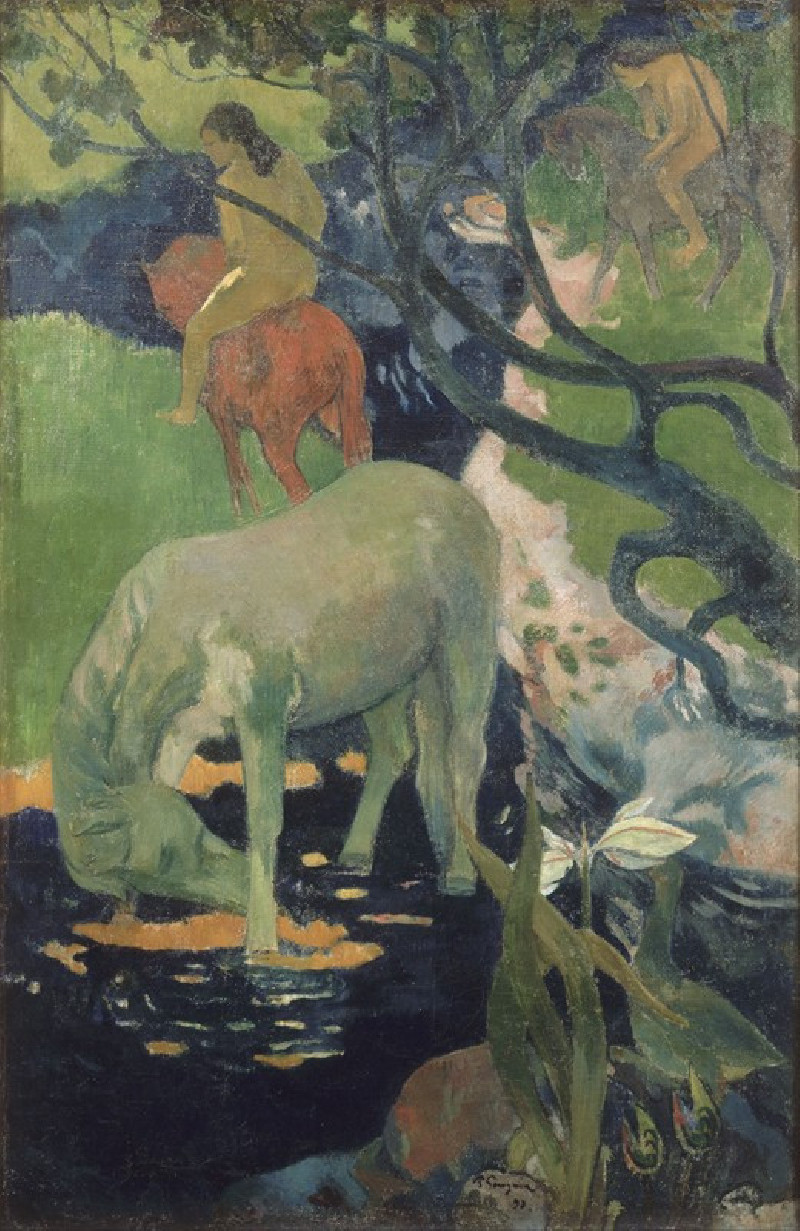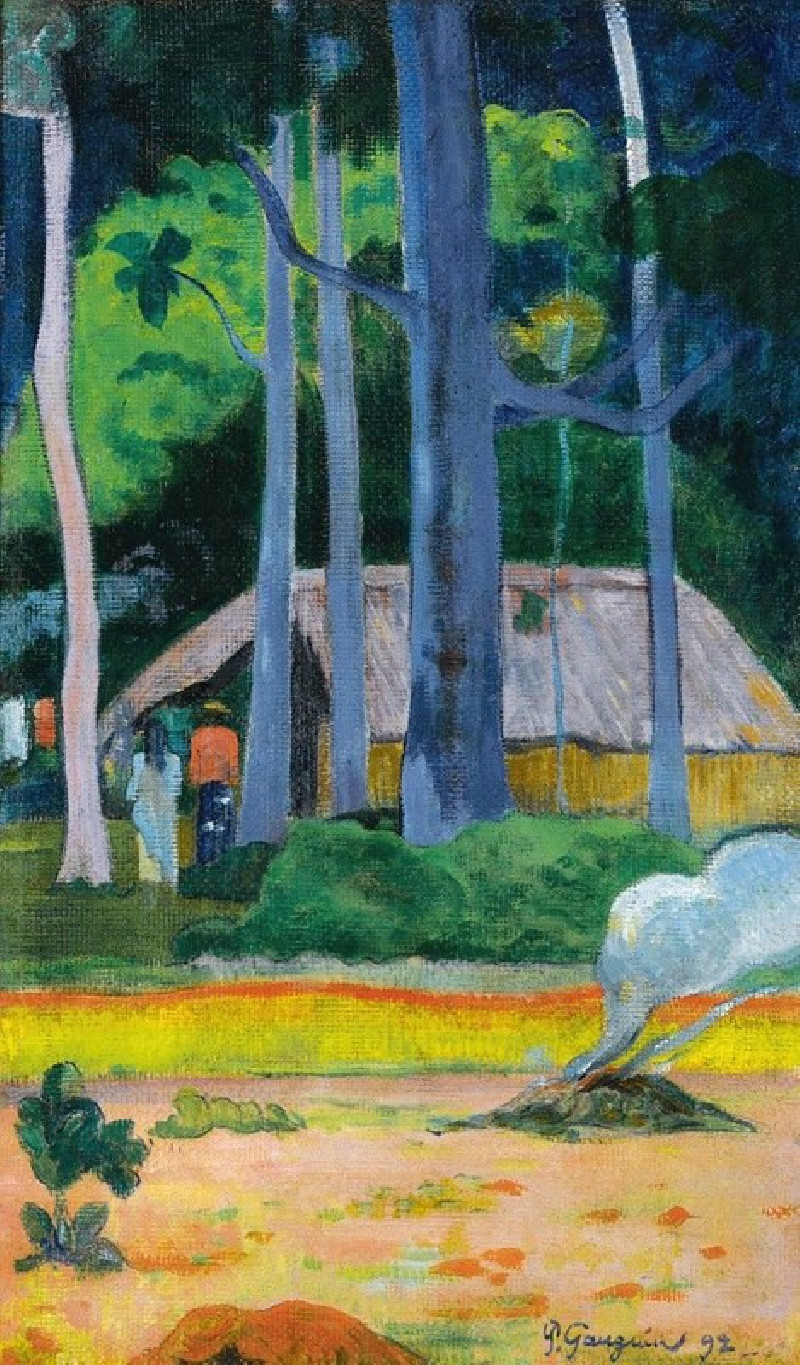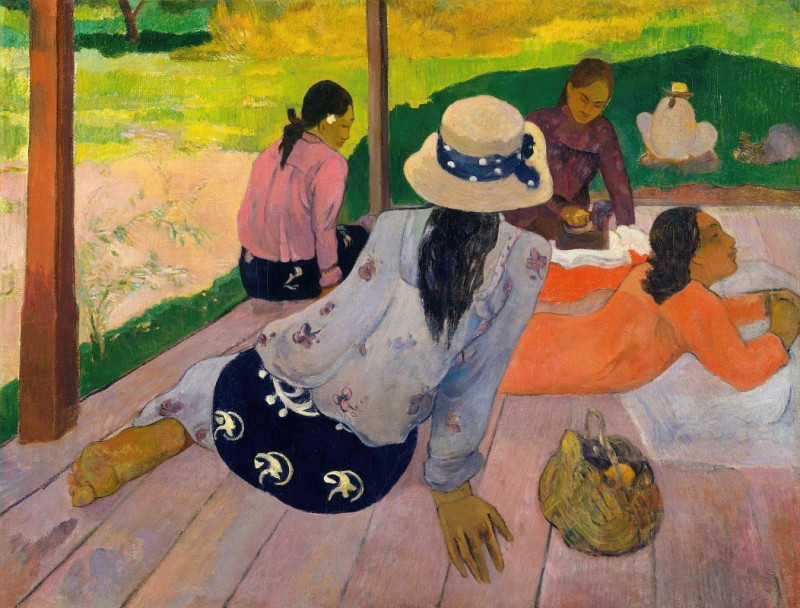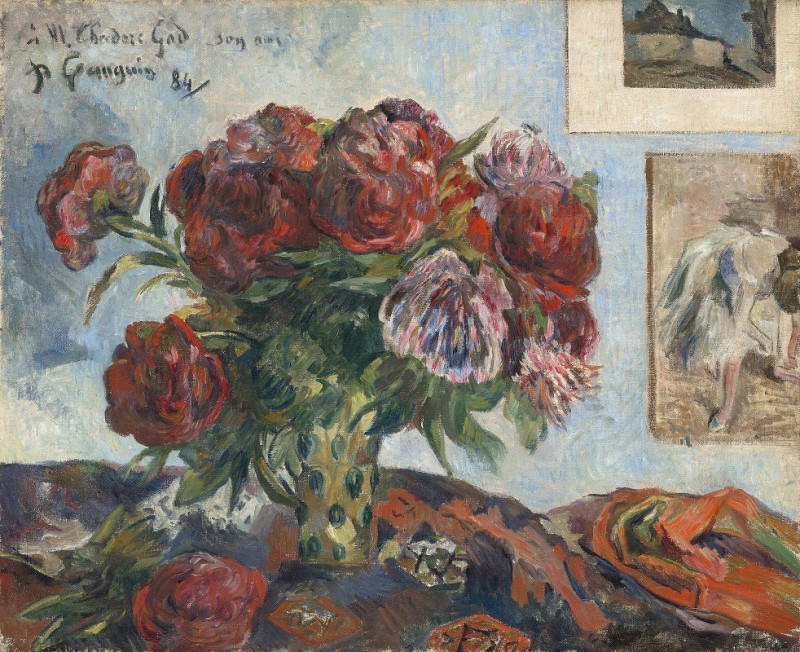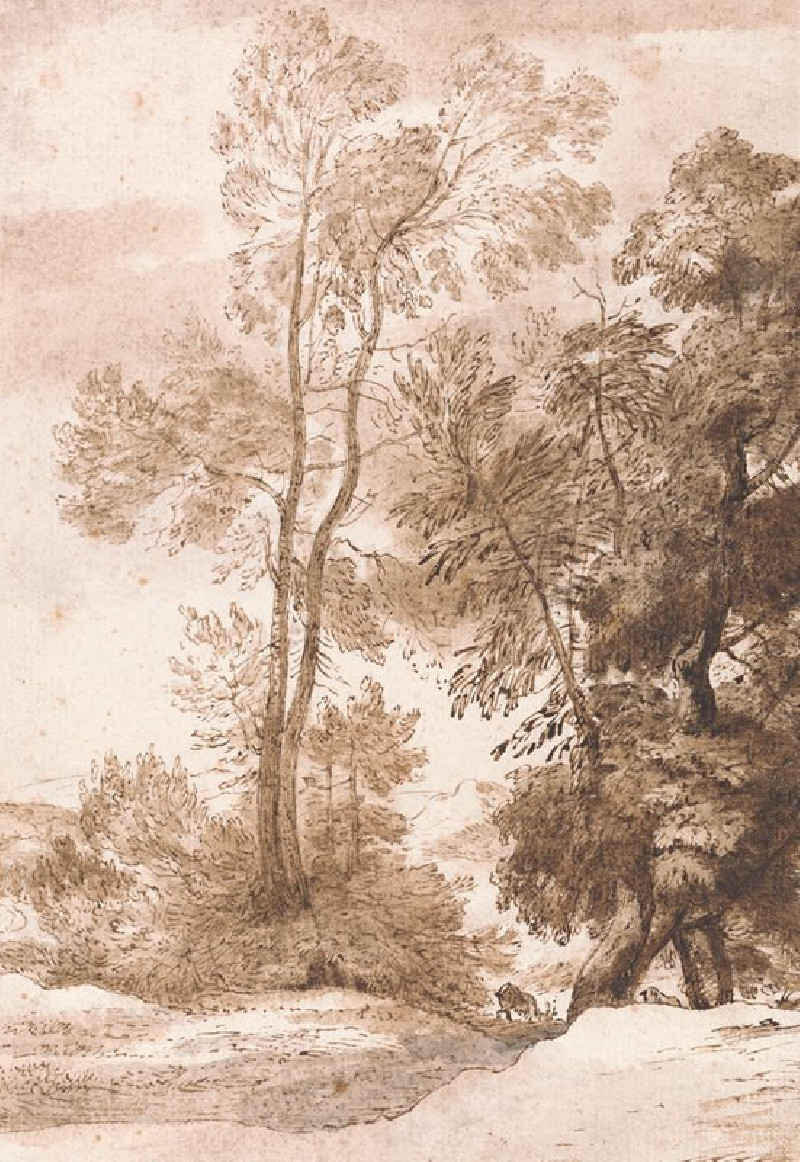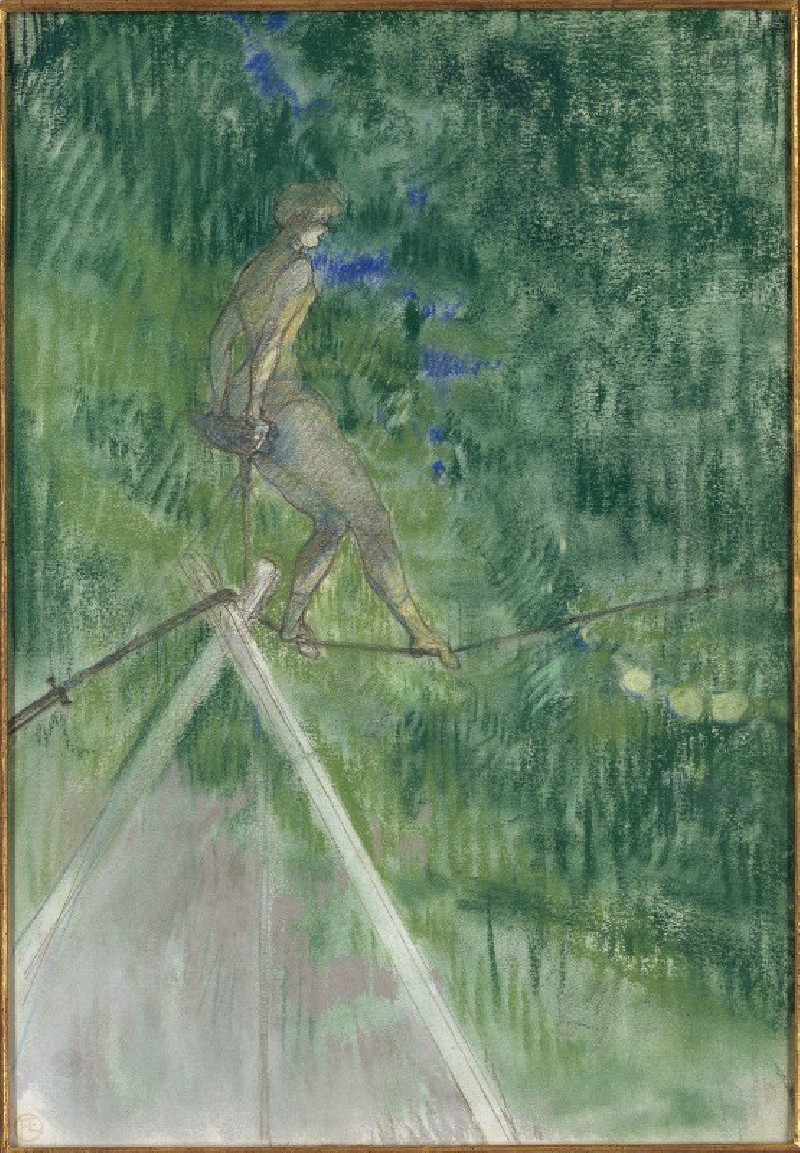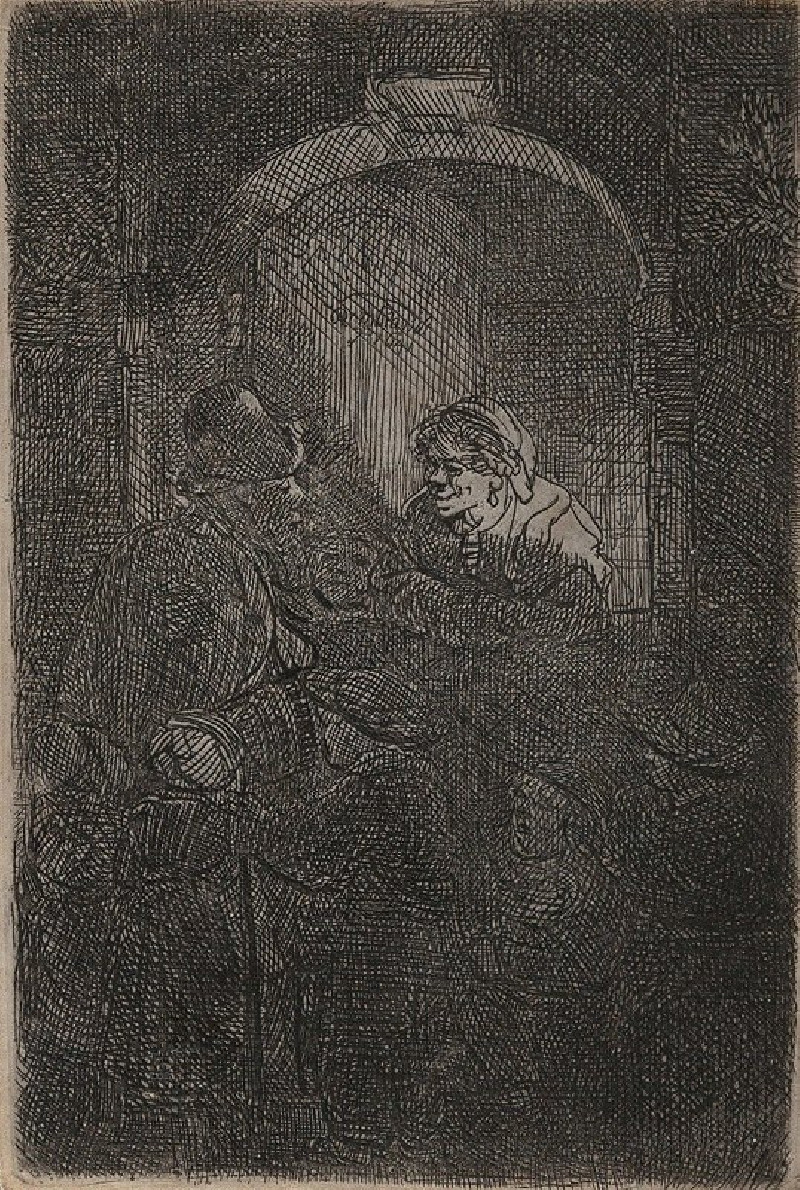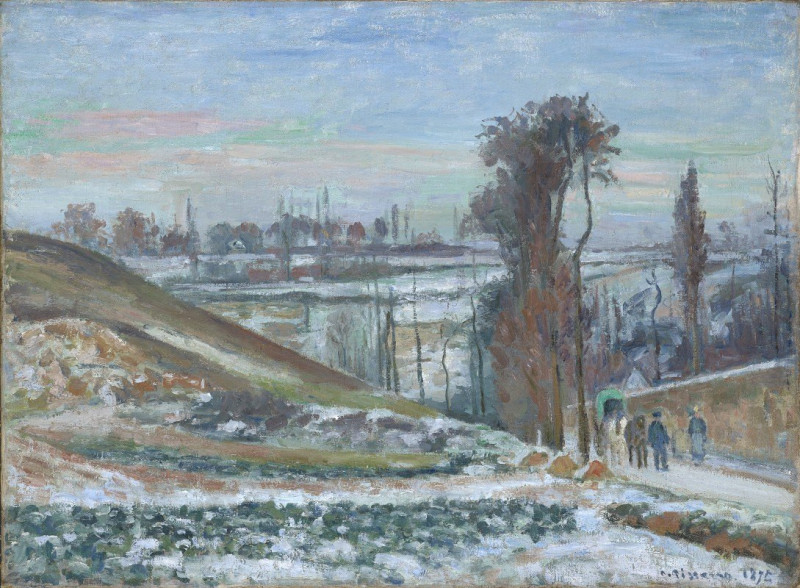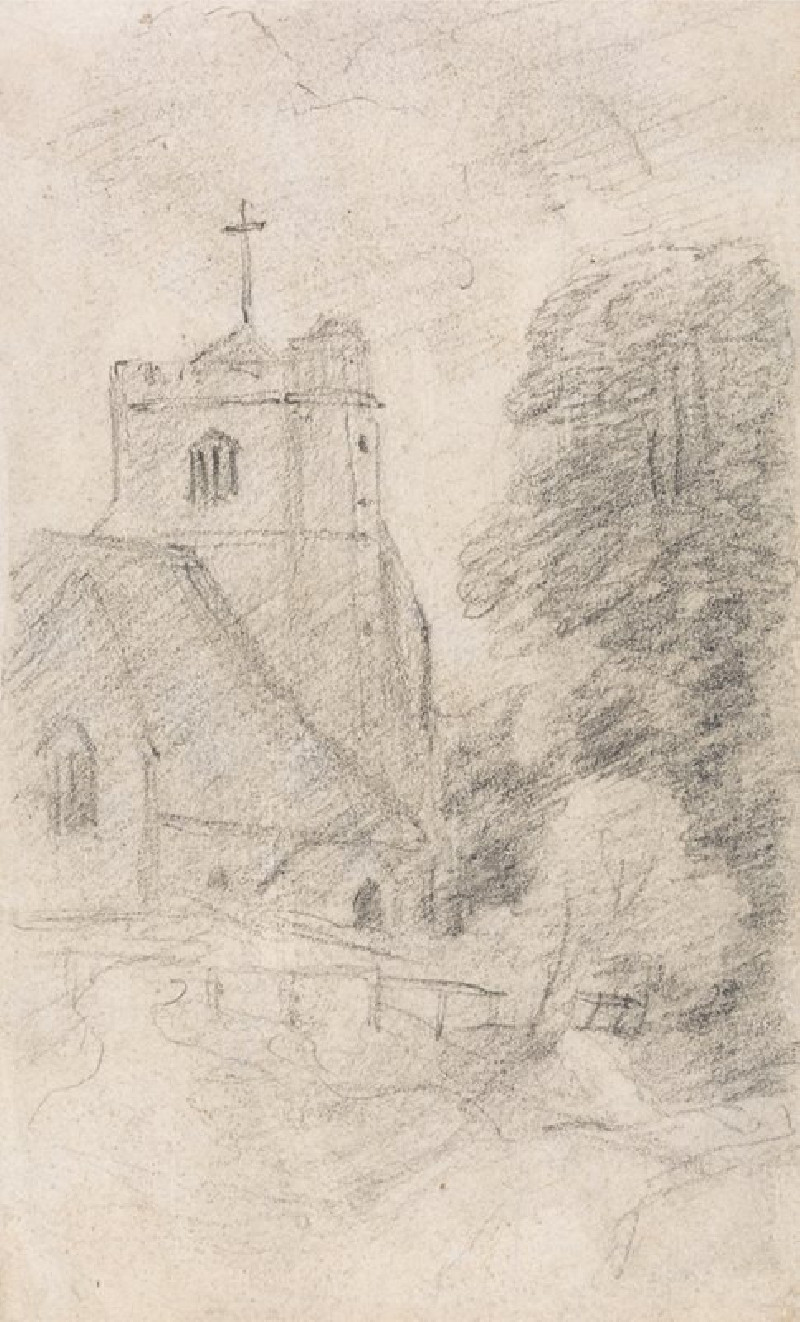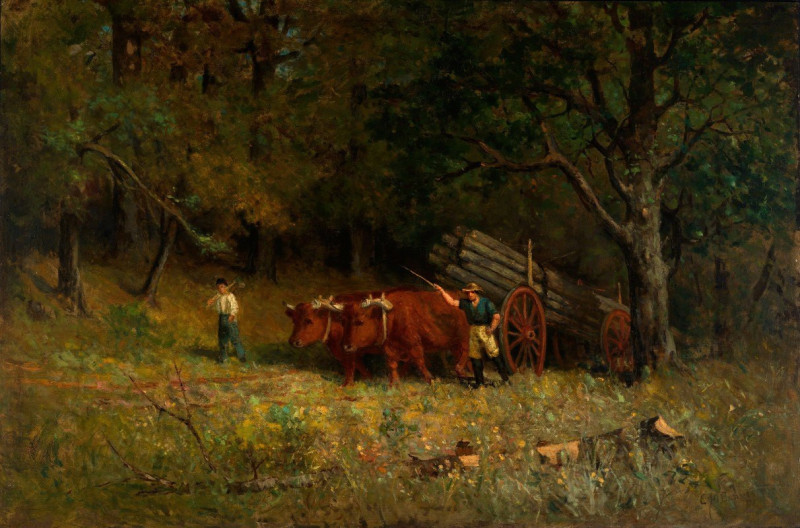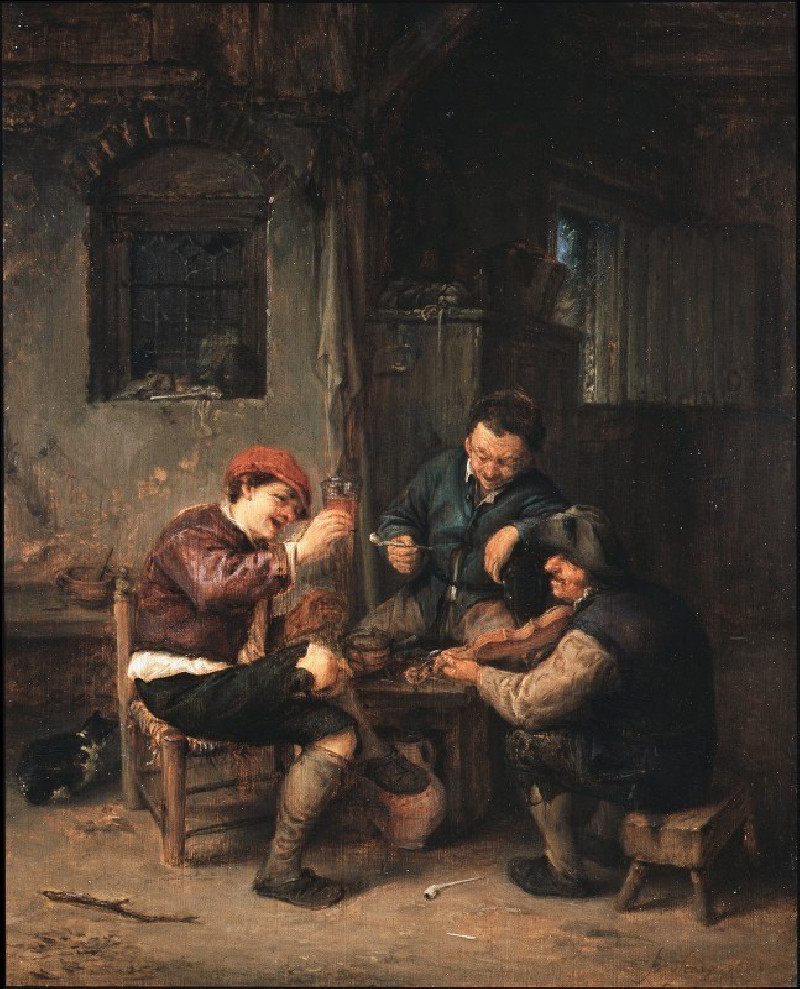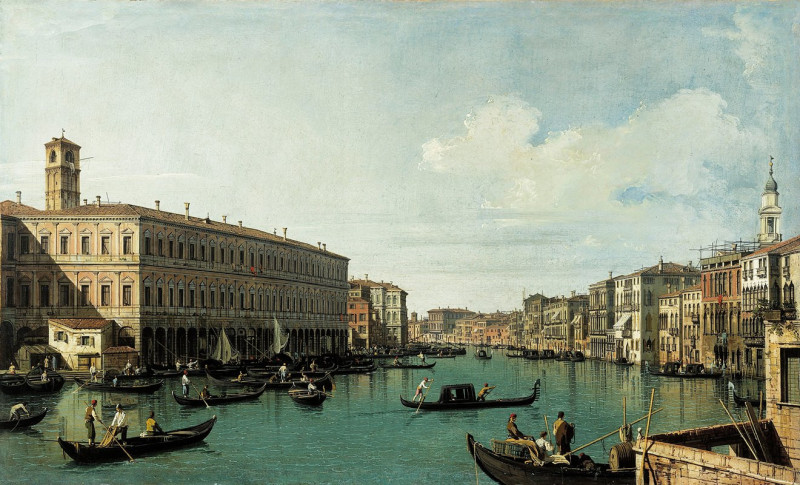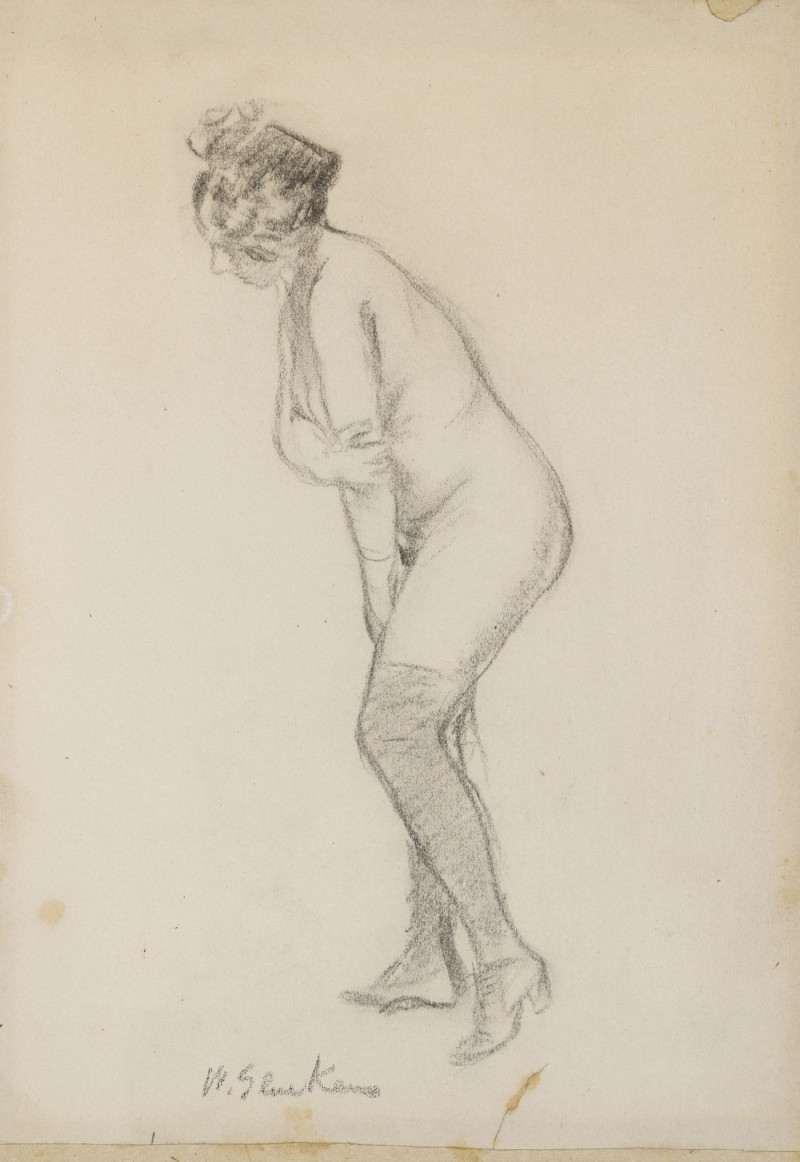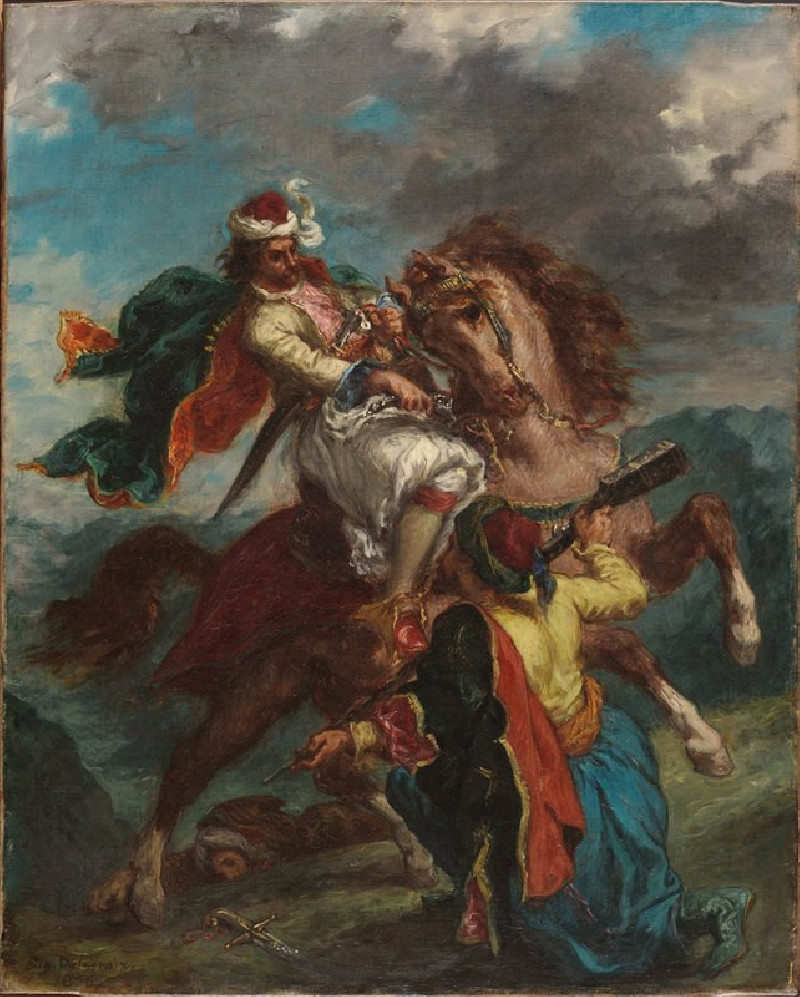Tahitian Landscape (1892)
Technique: Giclée quality print
Recommended by our customers
More about this artwork
Paul Gauguin's "Tahitian Landscape" (1892) captures the essence of Tahiti with a vivid expression of color and imagery that immerses the viewer in a tranquil, yet expressive environment. The painting presents a lush, verdant landscape under a dynamic, swirling sky, hinting at Gauguin’s fascination with the intensity and mysticism of the natural world.In the foreground, two Tahitian figures stand quietly, their poses reflective and their attire traditional, suggesting a deep connection to their homeland. Their presence in the painting is poignant, anchoring the human element amidst the overwhelming nature. Behind them, the land stretches out in varying shades of green, interspersed with bursts of color from tropical plants and trees, which emphasize the exoticism and fertile abundance of the island.A solitary horse grazes near a stream, its rusty brown color contrasting with the vibrant greens and the soft, earthy path in the foreground. This pastoral scene is both peaceful and powerful, exemplifying Gauguin’s ability to blend the everyday with the extraordinary."Tahitian Landscape" is more than just a depiction of a locale; it is an invitation to experience the spiritual and aesthetic dimensions of Tahiti through Gauguin’s eyes, characterized by bold color choices and a distinctive style that pushes the boundaries of the traditional landscape genre.
Delivery
Returns
Eugène Henri Paul Gauguin was a French Post-Impressionist artist. Unappreciated until after his death, Gauguin is now recognized for his experimental use of color and Synthetist style that were distinct from Impressionism. Toward the end of his life, he spent ten years in French Polynesia. The paintings from this time depict people or landscapes from that region.

